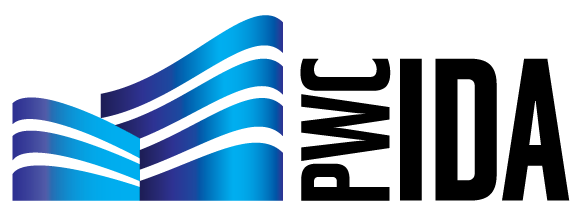What is an industrial revenue bond (also sometimes referred to as an IRB, or industrial development bond, or IDB, or private activity bond)?
Please note that the term Industrial Revenue Bond has been removed from the Internal Revenue Code (IRC) and replaced by the term Private Activity Bond. The Frequently Asked Question section will generally refer to such bonds by their more commonly known name of Industrial Revenue Bond or IRB
An Industrial Revenue Bond (IRB) is a financing tool created by the Commonwealth of Virginia to promote industry and develop trade by inducing manufacturing, industrial, governmental, non-profit and commercial enterprises to locate in or remain in Virginia through the issuance of bonds that are tax-exempt for federal income tax purposes and for Virginia income tax purposes. This allows the bonds to generally carry a lower interest rate than conventional financing.
What types of facilities can be financed with industrial revenue bonds?
501 (c)(3) Facilities
Medical Facilities
Certain Waste Disposal Facilities
Higher Education Facilities
Multi-Family Housing Facilities
Government Facilities
Manufacturing Facilities
What are the steps necessary to obtain industrial revenue bond financing?
Contact the IDA counsel or your bond counsel for preliminary advice regarding qualification for financing
Complete the IDA application
Schedule a public hearing before the IDA and obtain an IDA inducement resolution
Obtain the Board of County Supervisors approval
Obtain a commitment for financing from a bank or underwriter
Submit an application for allocation of Private Activity Bond Volume
Submit the bond documents to the IDA for approval
How long does the industrial revenue bond financing process take?
The time from start to the actual issuance of the tax exempt bonds varies depending on the complexity of the financing structure; however, bonds with less complex financing structures are generally issued in four to six months after the process starts.
What are the costs associated with obtaining industrial revenue bond financing?
The costs associated with IRB financing vary depending on the financing structure. The following charges will typically be incurred:
IDA fees
IDA counsel fees
Bank letter of credit fee
Underwriter's discount
Bond counsel fees
Borrower counsel fees
Bank and underwriter counsel fees
Does the IDA charge a fee in connection with issuing industrial revenue bonds? If so, what is the fee?
The IDA charges two fees: (1) an application fee that is payable at the time the completed application is submitted to the IDA. The application fee is based on the amount of financing being sought; (2) an annual administrative fee is also charged by the IDA. The annual administrative fee is first payable on the date the bonds are issued and then on each anniversary date thereafter until such time as the bonds are paid off using the formula of 1/8 of 1% of the unpaid balance of the bonds.
Can I use industrial revenue bond financing to refinance existing debt?
Under the IRC, the refinancing of tax-exempt debt issued after August 1986 is generally possible only if the proceeds of the new tax-exempt debt are used to immediately pay off the old tax-exempt debt and certain other qualifications are met.
Besides financing the acquisition of fixed assets, can I use the proceeds from industrial revenue bonds for working capital and to acquire equipment?
Generally, IRBs may not be used to finance working capital. Equipment may be financed using IRBs, but the IRC requires that equipment financed with tax-exempt bonds be depreciated on a straight line basis over an alternative class life. In some cases this restriction eliminates any advantage afforded by tax-exempt bonds.
Do any limits exist on the amount of money which I can borrow using industrial revenue bond financing?
The IRC imposes a number of restrictions on costs and amounts that can be financed using IRBs. The following are some restrictions that apply generally although the rules may vary depending on the type of IRB:
Only 2% of the bond proceeds may be used to finance issuance costs
Not more than 25% of the bond proceeds may be used to finance the acquisition of land
If the bonds are being used to finance the acquisition of previously used property or existing buildings, the applicant must spend for rehabilitation an amount equal to 15% of the amount of bond proceeds used to acquire the existing property (the amount is increased to 100% for equipment, making it generally not feasible to acquire used equipment with IRBs)
Bonds issued for manufacturing facilities are subject to a $10,000,000 limit.
There is also a capital expenditure limit for manufacturing facility bonds. During the six year period beginning three years before the bonds are issued and ending three years after the bonds are issued, the company’s capital expenditures in Prince William County, or other jurisdiction where the facility will be located, when combined with the bond issue size, may not exceed $20,000,000.
Is the IDA permitted to issue industrial revenue bonds to finance the acquisition or construction of projects involving housing units? If so, what types of housing projects?
The IDA can finance multi-family housing. In order to issue tax-exempt bonds, the project must meet the IRC definition of low or moderate income housing. The process is essentially the same as for other types of IRBs.

